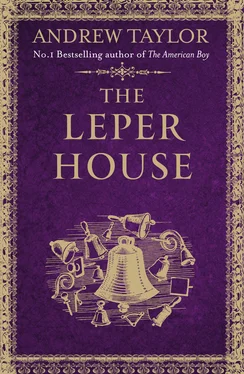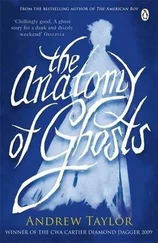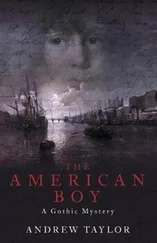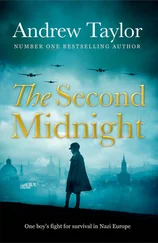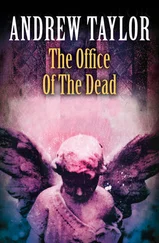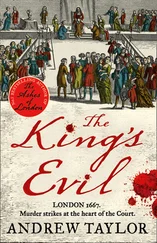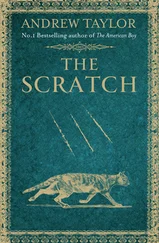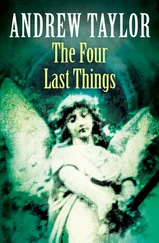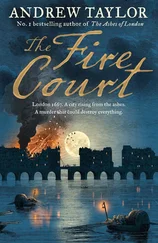ANDREW TAYLOR
The Leper House
Copyright Table of Contents Cover Title Page Copyright The Leper House Chapter 1 Chapter 2 Chapter 3 Chapter 4 Chapter 5 Chapter 6 Chapter 7 Chapter 8 Chapter 9 Chapter 10 Chapter 11 Chapter 12 Keep reading … About the author By the same author About the Publisher
Published by HarperCollins Publishers Ltd
1 London Bridge Street
London SE1 9GF
www.harpercollins.co.uk
First published in Great Britain by HarperCollins Publishers 2016
Copyright © Andrew Taylor 2016
Cover design by Dominic Forbes © HarperCollins Publishers Ltd 2016
Andrew Taylor asserts the moral right to be identified as the author of this work.
A catalogue record for this book is available from the British Library.
This novel is entirely a work of fiction. The names, characters and incidents portrayed in it are the work of the author’s imagination. Any resemblance to actual persons, living or dead, events or localities is entirely coincidental.
All rights reserved under International and Pan-American Copyright Conventions. By payment of the required fees, you have been granted the non-exclusive, non-transferable right to access and read the text of this e-book on-screen. No part of this text may be reproduced, transmitted, down-loaded, decompiled, reverse engineered, or stored in or introduced into any information storage and retrieval system, in any form or by any means, whether electronic or mechanical, now known or hereinafter invented, without the express written permission of HarperCollins e-books
Source ISBN: 9780008171230
Ebook Edition © JULY 2017 ISBN: 9780008179762
Version: 2017-06-19
Table of Contents
Cover
Title Page ANDREW TAYLOR The Leper House
Copyright Copyright Table of Contents Cover Title Page Copyright The Leper House Chapter 1 Chapter 2 Chapter 3 Chapter 4 Chapter 5 Chapter 6 Chapter 7 Chapter 8 Chapter 9 Chapter 10 Chapter 11 Chapter 12 Keep reading … About the author By the same author About the Publisher Published by HarperCollins Publishers Ltd 1 London Bridge Street London SE1 9GF www.harpercollins.co.uk First published in Great Britain by HarperCollins Publishers 2016 Copyright © Andrew Taylor 2016 Cover design by Dominic Forbes © HarperCollins Publishers Ltd 2016 Andrew Taylor asserts the moral right to be identified as the author of this work. A catalogue record for this book is available from the British Library. This novel is entirely a work of fiction. The names, characters and incidents portrayed in it are the work of the author’s imagination. Any resemblance to actual persons, living or dead, events or localities is entirely coincidental. All rights reserved under International and Pan-American Copyright Conventions. By payment of the required fees, you have been granted the non-exclusive, non-transferable right to access and read the text of this e-book on-screen. No part of this text may be reproduced, transmitted, down-loaded, decompiled, reverse engineered, or stored in or introduced into any information storage and retrieval system, in any form or by any means, whether electronic or mechanical, now known or hereinafter invented, without the express written permission of HarperCollins e-books Source ISBN: 9780008171230 Ebook Edition © JULY 2017 ISBN: 9780008179762 Version: 2017-06-19
The Leper House THE LEPER HOUSE
Chapter 1
Chapter 2
Chapter 3
Chapter 4
Chapter 5
Chapter 6
Chapter 7
Chapter 8
Chapter 9
Chapter 10
Chapter 11
Chapter 12
Keep reading …
About the author
By the same author
About the Publisher
THE LEPER HOUSE
Somewhere along the way, Mary mislaid her religion. The funeral was a humanist affair in a chapel, or whatever they call it, attached to a crematorium. There must have been nearly two hundred mourners. She had been only thirty-eight when she died, which is why her death touched so many lives – and why there was a sense of outrage in the air, rather than resignation.
Alan himself acted as master of ceremonies. He was used to public speaking and chairing meetings – he was the headmaster of a school about fifteen miles from Norwich. He kept his emotions as firmly in check as the timing.
‘How brave,’ whispered one of my neighbours.
‘He’s bearing up wonderfully,’ said a friend. ‘Especially when you think—’
‘He has to be brave for the children.’
The friend nodded. ‘At least her poor parents are dead.’
The coffin was at the end of the room. It was one of those environmentally friendly ones, designed to make a posthumous statement of faith in the possibility of a greener world to come, as it slid towards its complete destruction in the furnace. It had nothing to do with the Mary I remembered most vividly: the sideways glances, the grazed knees and the shrill giggles.
Alan took us through Mary’s life at a brisk pace – we had a time slot at the crematorium, and death waits for no one. He described our parents – a nurse and an estate agent, respectively – and the loving upbringing they had given her. He talked about her pet rabbit, Matilda, and our old dog, who recognized her step even when he was old and blind. (Alan did not mention the dog’s incontinence and appallingly bad breath.) He talked about their meeting at university, the rocky road of their romance and the happy years of their marriage. He waxed lyrical about the dedication she had brought to her career as a primary teacher and the devotion her pupils gave her in return. Finally, by way of peroration, he talked of their children, Matthew and Alice, as the crowning joys of her life.
The children were sitting in the front row. I had caught a glimpse of them as they came in. They both looked like Alan, poor kids, all long nose and small chin; there was not a trace of Mary. Maybe that was no bad thing.
What else? We had two readings, one by a teacher colleague of Mary’s (something vaguely uplifting from Kahlil Gibran) and another by an old boyfriend whose face was faintly familiar (Elizabeth Barrett Browning’s ‘How do I love thee? Let me count the ways …’). We sang, or mouthed, Blake’s ‘Jerusalem’, on the tacit understanding that it had somehow been purged of its religious connotations. Then the curtains parted and the coffin slid away into the industrial processing of death.
At no point did Alan mention me. Nor did he meet my eyes. I had been erased from the story of Mary’s life. I was invisible.
There was an order of service, a little booklet with the verses of ‘Jerusalem’ and the texts of the readings. On the front was a vignetted photograph of Mary, which I looked at while the coffin slid between the curtains to the accompaniment of Robbie Williams’s ‘Angels’.
The picture must have been taken a year or so earlier. She was smiling at the camera. The light caught the angles of her face – the high cheekbones, the dark eyebrows, the full lower lip; my features as well. Her hair covered most of her forehead, so I couldn’t see the scar. Something about the photo suggested that she had been one of a group – a birthday celebration, perhaps, or a reunion. She looked older than she was in my memory. Happier, too.
Everyone, Alan said just before we left, was welcome to join the family for a cup of tea and a sandwich in the village hall, which was two miles away.
We filed out. There was an unspoken etiquette about this – the family went first, for they were at the top of the hierarchy of grief. Then came the close friends, I guessed, then the colleagues from work. Finally, the people in the back rows went outside. People who hadn’t known her well. People who were merely curious. People like me, the ghosts from Mary’s past.
Читать дальше
